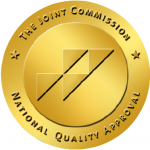It is commonly known that many drug users’ fatal overdose episodes have been halted from a powerful drug known as Narcan. One might see the irony that another drug can help a drug overdose. However, this paradoxical combination of drugs works effectively because Narcan is the brand name for the drug Naloxone, which is an opioid antagonist. Antagonist drugs are substances that act against and block the action of another substance. In other words, opioid antagonists have the ability to halt the action of opioids during an overdose by reversing some of the symptoms. Thus, these opioid antagonists block the physiological reactions caused by excessive use of extremely addictive drugs like heroin, morphine, and oxycodone.
Symptoms of Opioid Overdose
Opioid drugs ignite receptors in the brain that stimulate feelings of euphoria and increase tolerance with frequent use. Thus, most opioid users begin to increase their dose to obtain the same high. Symptoms of an opioid overdose may include:
- Unusual sleepiness
- Unresponsiveness to touch or voice
- Irregular, slow, or absent respiration
- Slow pulse and low blood pressure
- Blue or purple fingernails and lips
- Reduced pupil size, known as “pinpoint pupils”
Narcan plays an invaluable role in stopping opioid overdose because it is successful in treating the symptoms of an opioid overdose only. When Narcan is given to someone who has not taken opioids, Narcan will have no effect.
In 2018, the U.S. Surgeon General issued an advisory recommending people including opioid users, first-responders, and health professionals carry Narcan to decrease overdose fatalities associated with the opioid epidemic. Considering the Surgeon General’s advisory, it is essential to be educated about what Narcan is and what it does.
How and Who Administers Narcan?
Narcan is available across the country as a legal prescription and over the counter in 36 states in the United States. Narcan is usually administered by healthcare professionals, but other people trained to give Narcan can use it in serious situations. In a clinical setting, health professionals inject Narcan directly into veins or muscle tissue. Narcan administration is not limited to a hospital or clinical facility and can be administered via nasal spray. As a result of the growing opioid crisis in the U.S., new laws have been passed that have made it legal for anyone to buy Narcan without the need for a prescription. The nasal spray is available in local pharmacies.
How Narcan Works and Why it Only Works on Opioid Overdose?
According to research published by the U.S. Department of Health and Human Services, the Chemical Hazards Emergency Management Department admits, “The precise mechanism of action of the opiate antagonist effects of Naloxone is not fully understood.” However, researchers believe that when administered immediately after an opioid overdose, Narcan stops the body’s mu, delta, and kappa receptors from forming attachments with opioids, which arrest the brain and nervous system by altering the function of the brainstem, limbic system, and spinal cord. Scientists believe that Narcan has the highest affinity for the mu receptor.
Opioids can affect many different areas of the brain and body. The brainstem is affected by slowed involuntary respiration, and opioids also shrink feelings of pain and prevent coughing. Additionally, the limbic system is affected by opioids, as these drugs have the power to stimulate feelings of intense contentment, pleasure, and relaxation. The limbic system is immensely important as it is the designated emotional control center of the human body. Lastly, the spinal cord passes painful stimuli and sensations to the brain, and this ability is defected with opioid use.
Duration of the Narcan mechanism is relatively quick and repeated doses or infusion may be required for Narcan to fully arrest the opioid overdose. To activate and maintain Narcan’s powerful effects, multiple doses may be required until further care is provided. Despite the increasing amount of opioid overdoses handled in hospital emergency rooms, and the fact that Naloxone, a pure opioid antagonist, has been available for years, there is still debate over the correct dose and optimal form of administration.
Side Effects of Narcan
Despite the life-saving effects of Narcan, it creates an unpleasant experience for the opioid user during administration, as it directly leads users to experience painful opioid withdrawal symptoms. The withdrawal symptoms arise because Narcan interferes with opioids attaching to brain receptors and ultimately leads to immediate and intense opioid withdrawal symptoms which include: nausea, vomiting, body aches, and fever. Unlike opioid drugs, Narcan is not addictive and does not exacerbate a user’s chemical dependency. Narcan can save lives, but it is outstandingly important to recognize that Narcan is not a substitute for addiction treatment!
In the aftermath of an overdose, getting your loved one the help they need is essential. Boardwalk Recovery can answer any questions you have about opioid addiction, treatment options, and how our programs can help your loved one begin a sober and clean life free from drug and alcohol abuse.
Life can be good again and we’d like to show you how.






